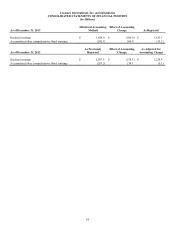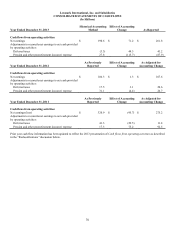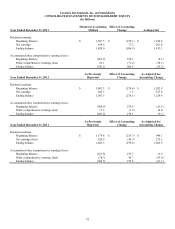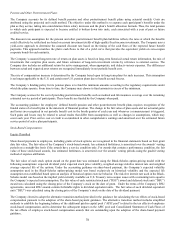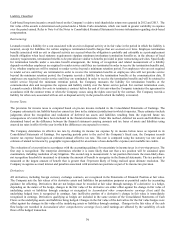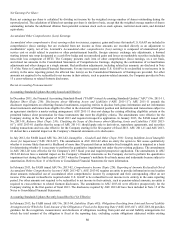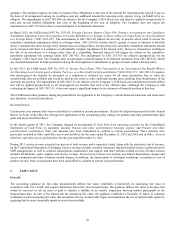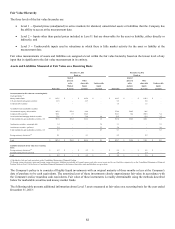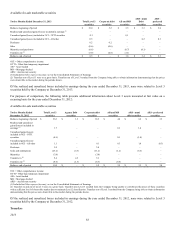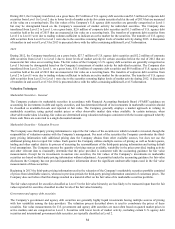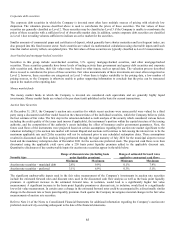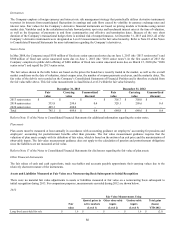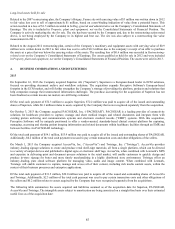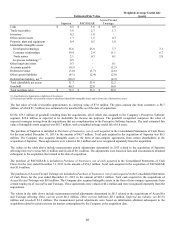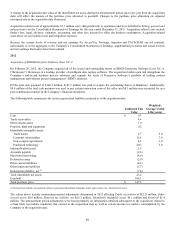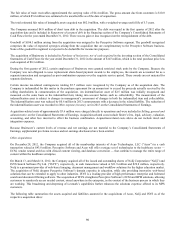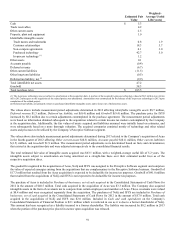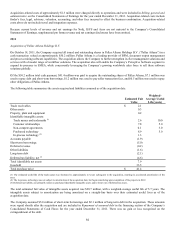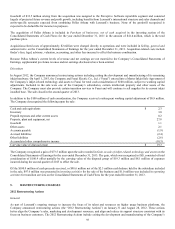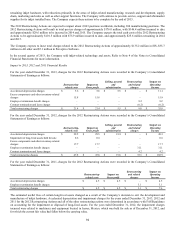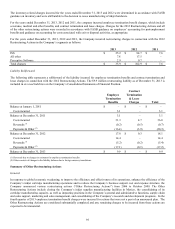Lexmark 2013 Annual Report Download - page 89
Download and view the complete annual report
Please find page 89 of the 2013 Lexmark annual report below. You can navigate through the pages in the report by either clicking on the pages listed below, or by using the keyword search tool below to find specific information within the annual report.
85
Corporate debt securities
The corporate debt securities in which the Company is invested most often have multiple sources of pricing with relatively low
dispersion. The valuation process described above is used to corroborate the prices of these securities. The fair values of these
securities are generally classified as Level 2. These securities may be classified as Level 3 if the Company is unable to corroborate the
prices of these securities with a sufficient level of observable market data. In addition, certain corporate debt securities are classified
as Level 1 due to trading volumes sufficient to indicate an active market for the securities.
Smaller amounts of commercial paper and certificates of deposit, which generally have shorter maturities and less frequent trades, are
also grouped into this fixed income sector. Such securities are valued via mathematical calculations using observable inputs until such
time that market activity reflects an updated price. The fair values of these securities are typically classified as Level 2 measurements.
Asset-backed and mortgage-backed securities
Securities in this group include asset-backed securities, U.S. agency mortgage-backed securities, and other mortgage-backed
securities. These securities generally have lower levels of trading activity than government and agency debt securities and corporate
debt securities and, therefore, their fair values may be based on other inputs, such as spread data. The valuation process described
above is used to corroborate the prices of these securities. Fair value measurements of these investments are most often categorized as
Level 2; however, these securities are categorized as Level 3 when there is higher variability in the pricing data, a low number of
pricing sources, or the Company is otherwise unable to gather supporting information to conclude that the price can be transacted
upon in the market at the reporting date.
Money market funds
The money market funds in which the Company is invested are considered cash equivalents and are generally highly liquid
investments. Money market funds are valued at the per share (unit) published as the basis for current transactions.
Auction Rate Securities
At December 31, 2013, the Company’s auction rate securities for which recent auctions were unsuccessful were valued by a third
party using a discounted cash flow model based on the characteristics of the individual securities, which the Company believes yields
the best estimate of fair value. The first step in the valuation included a credit analysis of the security which considered various factors
including the credit quality of the issuer (and insurer if applicable), the instrument’s position within the capital structure of the issuing
authority, and the composition of the authority’s assets including the effect of insurance and/or government guarantees. Next, the
future cash flows of the instruments were projected based on certain assumptions regarding the auction rate market significant to the
valuation including (1) the auction rate market will remain illiquid and auctions will continue to fail causing the interest rate to be the
maximum applicable rate and (2) the securities will not be redeemed prior to any scheduled redemption dates. These assumptions
resulted in discounted cash flow analysis being performed through the legal maturity of July 2032 for the municipal airport revenue
bond and the mandatory redemption date of December 2021 for the auction rate preferred stock. The projected cash flows were then
discounted using the applicable yield curve plus a 250 basis point liquidity premium added to the applicable discount rate.
Quantitative disclosures of key unobservable inputs for auction rate securities appear in the table below.
Security type
Range of discount rates (including basis
p
oint li
q
uidit
y
p
remium
)
Range of estimated forward rates
a
pp
lied to contractual cash flows
Minimum Maximum Minimum Maximum
Auction rate securities – municipal debt 2.8% 9.9% 0.1% 7.4%
Auction rate securities – preferred 3.1% 6.9% 0.3% 5.1%
The significant unobservable inputs used in the fair value measurement of the Company’s investments in auction rate securities
include the estimated forward rates and discount rates used in the discounted cash flow analysis as well as the basis point liquidity
premium. A significant increase in the estimated forward rates, in isolation, would lead to a significantly higher fair value
measurement. A significant increase in the basis point liquidity premium or discount rate, in isolation, would lead to a significantly
lower fair value measurement. In certain cases a change in the estimated forward rates could be accompanied by a directionally similar
change in the discount rate or basis point liquidity premium. Each quarter the Company investigates material changes in the fair value
measurements of auction rate securities.
Refer to Note 21 of the Notes to Consolidated Financial Statements for additional information regarding the Company’s auction rate
preferred stock activity occurring subsequent to the date of the financial statements.
85


